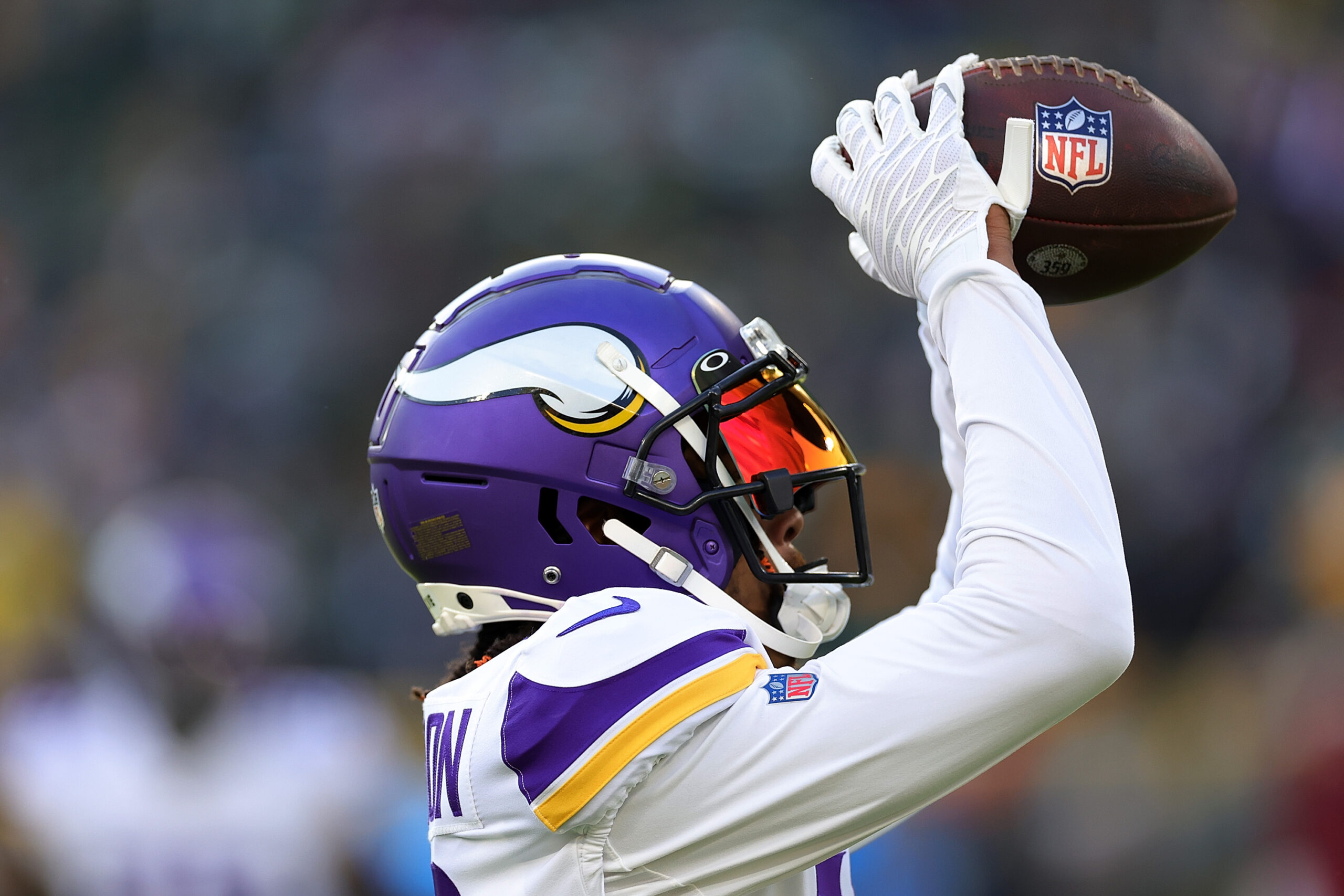Among the three basics of best ball, roster construction is the most talked about with many studies being done and released each year.
In a typical 18-round tournament draft, you have experts claiming edges based on differences that are often less than 1% and do not take into account when you draft players at those positions.
Best Ball Fantasy Football: Everything You Need to Know
Want to stay up to date with all of our latest content?
How to approach roster construction in best ball fantasy football
A better way to look at roster construction is as a guardrail.
Drafters don’t want to be outside the guardrail except rarely when doing a strategy such as robust RB, and even then it should be done in a very specific way.
So what are the guardrails?
- 2-3 QBs
- 5-6 RBs
- 7-9 WRs
- 2-3 TEs
How much of each position once inside the guardrail should depend on the quality of the players already drafted.
For instance, if you spend a second-round pick on a top quarterback like Josh Allen or Patrick Mahomes, you are counting on that player to give you good results.
Spending a third pick on a quarterback will leave other position groups weak and is not typically ideal.
This goes for the tight end position as well. The numbers for win or advance rates are very poor outside of these guardrails historically and in most cases should be avoided
When contests are 20 rounds instead of 18, it opens up the board a bit to allow for depth at position groups you think might be weaker.
A good rule of thumb in most cases is to have a third quarterback and use the last spot to either strengthen a weak position group or take a long shot on a high-upside player.
Someone like a veteran who has flirted with retirement but still has playing chops or a high-upside rookie.
Limit player exposure in the early rounds
Player exposure comes into play primarily for drafters who play a lot of teams.
Once you get past 30 teams, you should be considering the maximum exposure you want of each player.
While many experts are happy to build 150 teams with 40% to 50% exposure of certain players, other experts like myself have a much more conservative viewpoint.
The biggest difference between daily fantasy, traditional season long fantasy football with access to waivers, and best ball is player injuries.
The advance rate of first- and second-round players can ruin your season. Players who miss the year due to injury tend to have two to three times worse advance rates than players who play all year but play poorly.
If you build 100 teams with 40% of a second-round player and he gets hurt in the preseason, you are going to need a miracle to make even half of your money back on the year.
While to a certain extent the old saying “no risk it, no biscuit” is true, most players don’t take into consideration this one important fact especially early in drafts: Players drafted that high are there for a reason.
Even if you like a second-round player significantly more than the rest, a projection might have them at 50 more fantasy points through the best ball regular season of 14 weeks. That is 3 points per week.
If a player gets injured you will be down 15 to 20 points a week.
Keep this in mind when considering how much risk you want to have.
25% total exposure and 15% on guys in the first two rounds still gives you great leverage especially if you are talented at building overall rosters.
Importance of game selection
Setting a budget, deciding on your own personal risk factors, and knowing the percentages are very important when choosing what site to play on and what contests to select.
We all want shots at life-changing money, but those contests can be very top-heavy, similar to DFS.
















